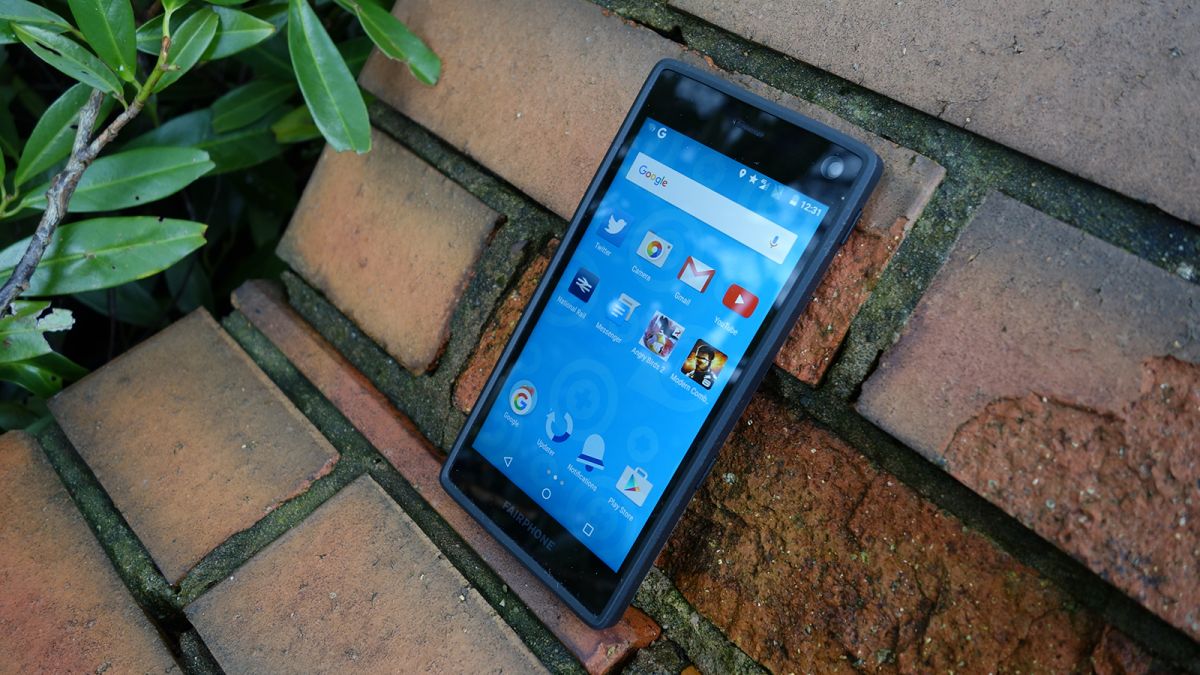
Introduction and features
In today’s smartphone climate it makes a change to see something different – and whatever else the Fairphone 2 is, it’s certainly different. Built with sustainability and repairability in mind rather than joining the high-end-specs race, this is a phone for the environmentally conscious – which, really, should be just about all of us.
That said, its specifications aren’t actually that bad, putting the Fairphone 2 firmly in the mid-range section of the market, but the focus of this handset is on where its components come from, and how long they’re going to last.
The Dutch startup behind the phone has been in operation in some form or another since 2010, and this new phone follows up on the first Fairphone, which had a production run of 60,000 devices.
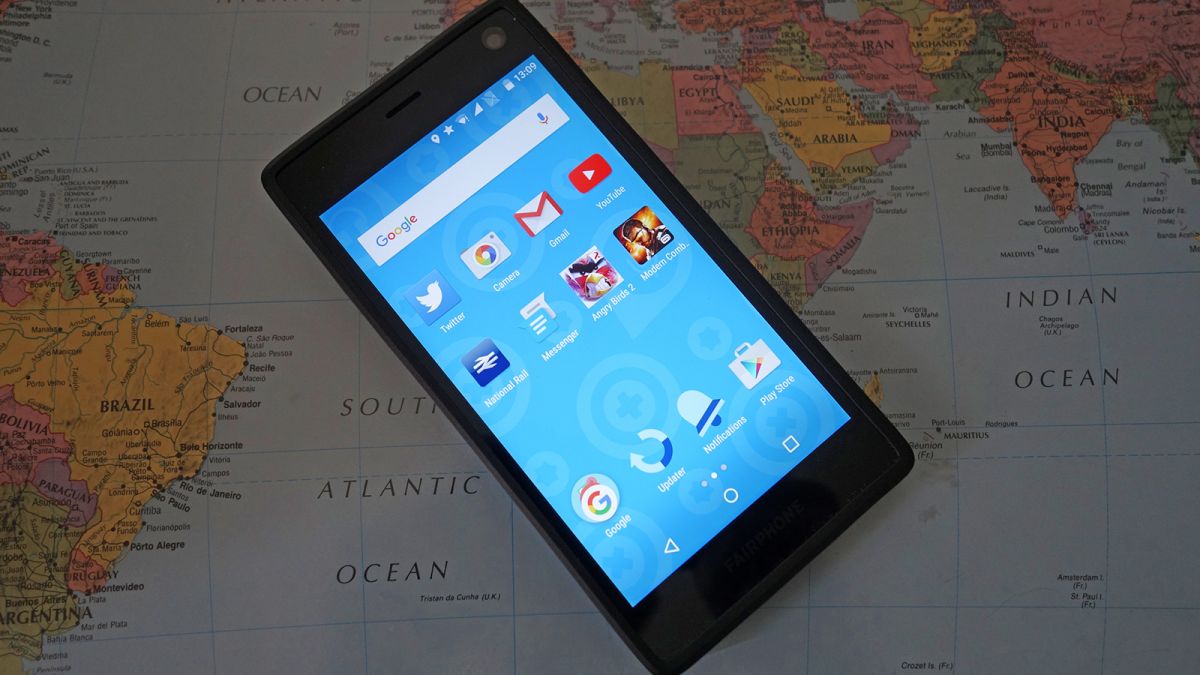
Fairphone has grander ambitions for the Fairphone 2, bumping up the capabilities of the handset, introducing a new design from Fairphone itself and making itself available to a wider market.
The aims of its makers are two-fold: first to produce a smartphone built from materials that are all ethically and sustainably sourced, and second to reduce e-waste with a modular approach that makes the handset simple to repair (and potentially upgrade in the future).
It can be yours today for €525 (around £395/US$570/AU$805. That’s by no means cheap – you can get a Nexus 5X or a 16GB iPhone 5S for less – but you’re buying into an ethos as well as picking up some hardware.
You’re also getting a phone that should last you a long, long time (five years, says Fairphone), which makes price comparisons somewhat tricky to make.
Design
The Fairphone 2 has an eye-catching look, but not in the conventional sense: the back of the phone case I was sent is transparent, so its components are on show, x-ray-style (other backings, including solid colours, are available).
Its inner modules – seven components in all, from the camera to the speakers – are easy to swap out. And yes, that does include a removable battery.
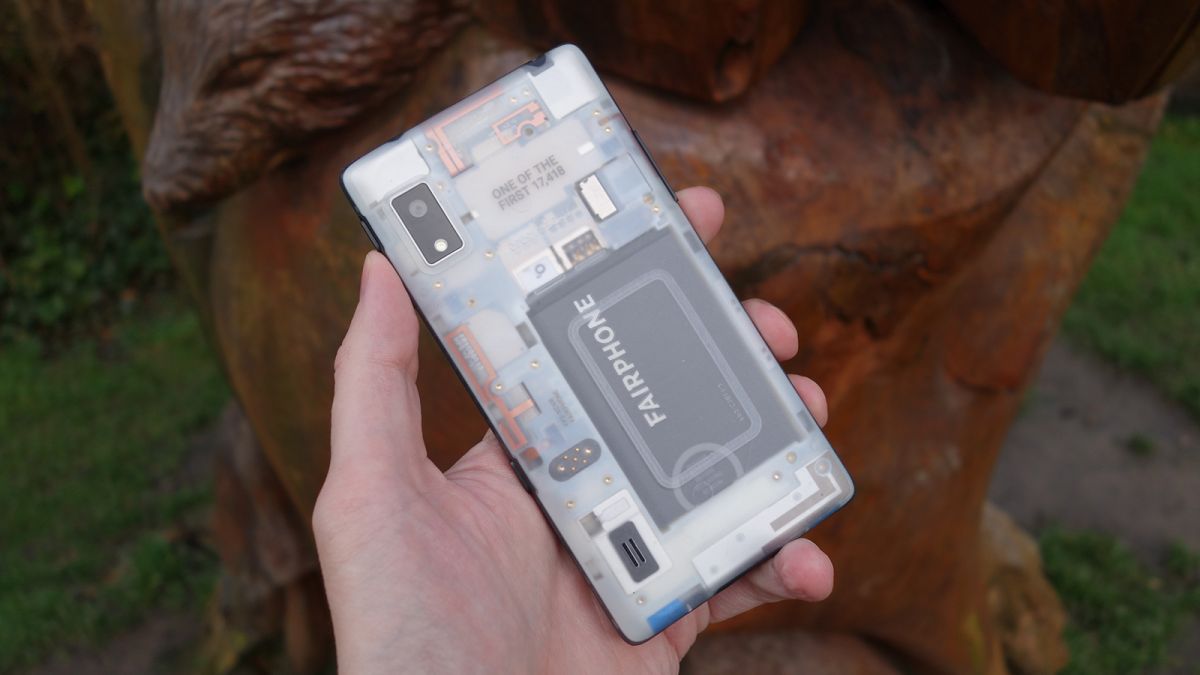
All you need to take the phone apart is a small Philips screwdriver. There are two SIM card slots here as well, for switching between your work and home life, or the two families you’ve kept secret from each other all these years.
It’s a thick (11mm) phone by today’s standards, but at 168g it doesn’t feel heavy in the hand, just a little chunky. At 143 x 73mm its forward-facing surface area is some 84% the size of the phablet-pushing Nexus 6P, and it’s just about possible to use the 5-inch display with one hand (assuming you have fairly large hands).
The plastic backing that I’ve already mentioned doubles as a case of sorts, and adds a thick rubber rim to the sides of the handset. It’s a bit of a pain to get on and off, but it should at least keep your Fairphone 2 safe from harm if you drop it (another feature with an eye on the longevity of the phone). It also makes swiping in from the sides of the screen a little awkward.
The side buttons are thick and plasticky, with a power and camera shutter button on the right and volume controls on the left. A 3.5mm headphone socket on the top, and a micro USB port at the bottom complete the lineup of external ports, but there’s a microSD slot (plus those two SIM trays) if you yank the plastic back off.
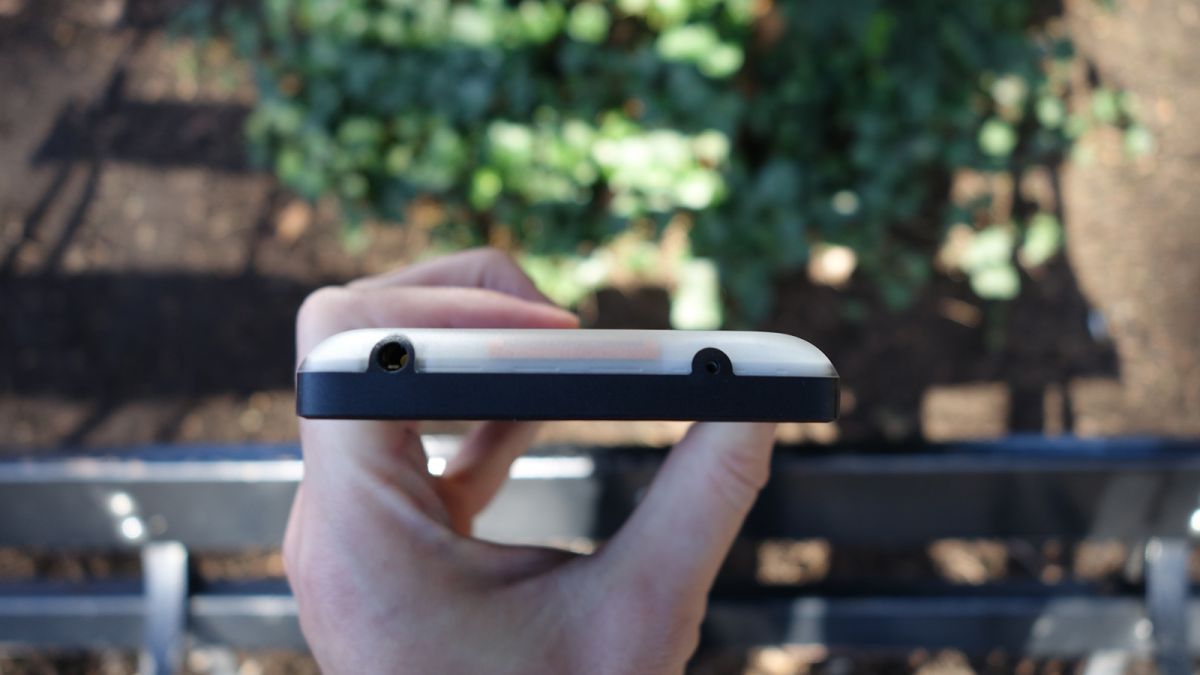
The 5-inch IPS display runs at a full HD resolution of 1080 x 1920 pixels (that’s a very respectable 441 pixels per inch), so the screen is clear and sharp, if not quite as bright as the AMOLED screens favoured by the likes of Samsung.
It’s by no means ugly to look at, but you will notice the difference from a Samsung Galaxy S6 or a Nexus 6P, for example.
In terms of holding the phone, hitting its buttons and general use, it feels a lot cheaper than its price tag suggests. On the other hand, that exposed backing (if you go for the translucent option) is a party trick that’s more impressive than you might think – in my eyes it really adds to the aesthetic appeal of the phone.
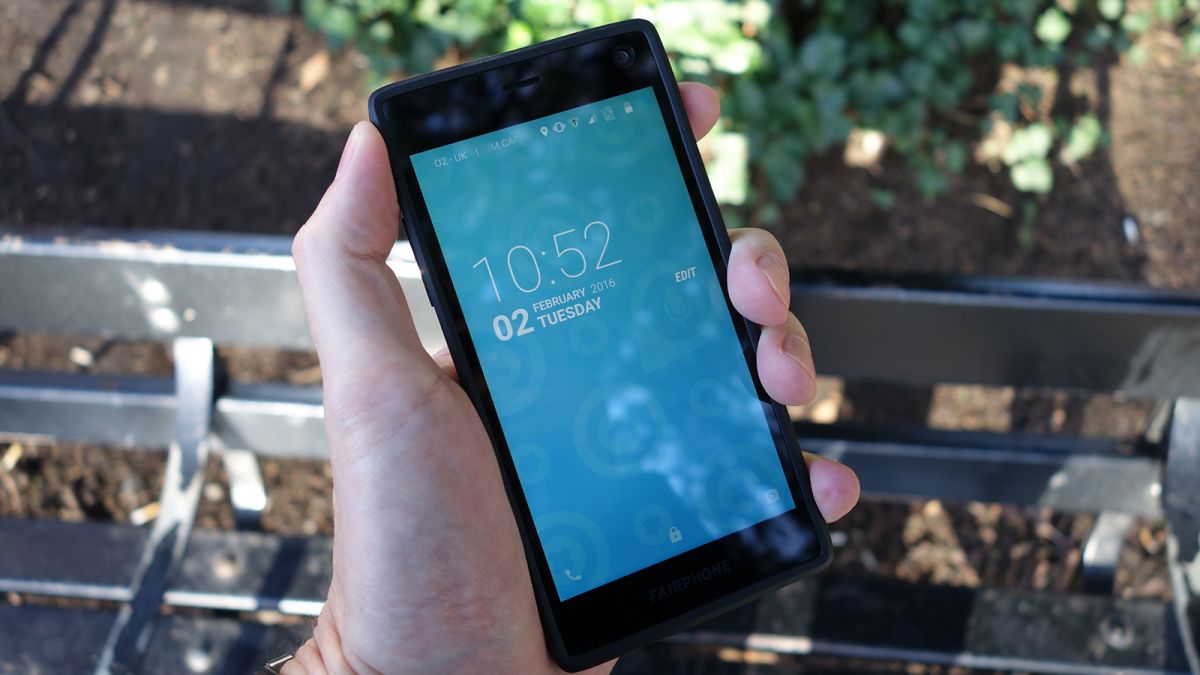
And there’s nothing to complain about as far as the display is concerned, which is perhaps the most important element in terms of purely physical considerations..
There’s a little red LED notification light above the display in the top-left corner – because of its colour I kept thinking something had gone wrong with the phone, but it simply alerts you to new notifications.
Apparently it can flash in three colours, but the only other colour I saw was green, to indicate a full charge; whatever causes the other colour to appear, I wasn’t doing it.
Responsible and repairable
You’re not really going to buy the Fairphone 2 for its looks or its specs, though – you’re going to buy it because of the way it’s been made, and the philosophy behind it.
Fairphone prides itself on working harder than anyone to make sure the materials for its handsets come from sustainable sources, and arrive via supply chains where workers are paid a fair wage.
The company admits it hasn’t quite got there yet: thanks to the intricacies of the smartphone supply chain, which even Fairphone itself hasn’t completely untangled, not all the minerals in the Fairphone 2 are guaranteed to be conflict-free (that is, mined from sources that don’t profit militia groups in the developing world).
However, Fairphone is committed to making sure that’s the case as soon as it possibly can.
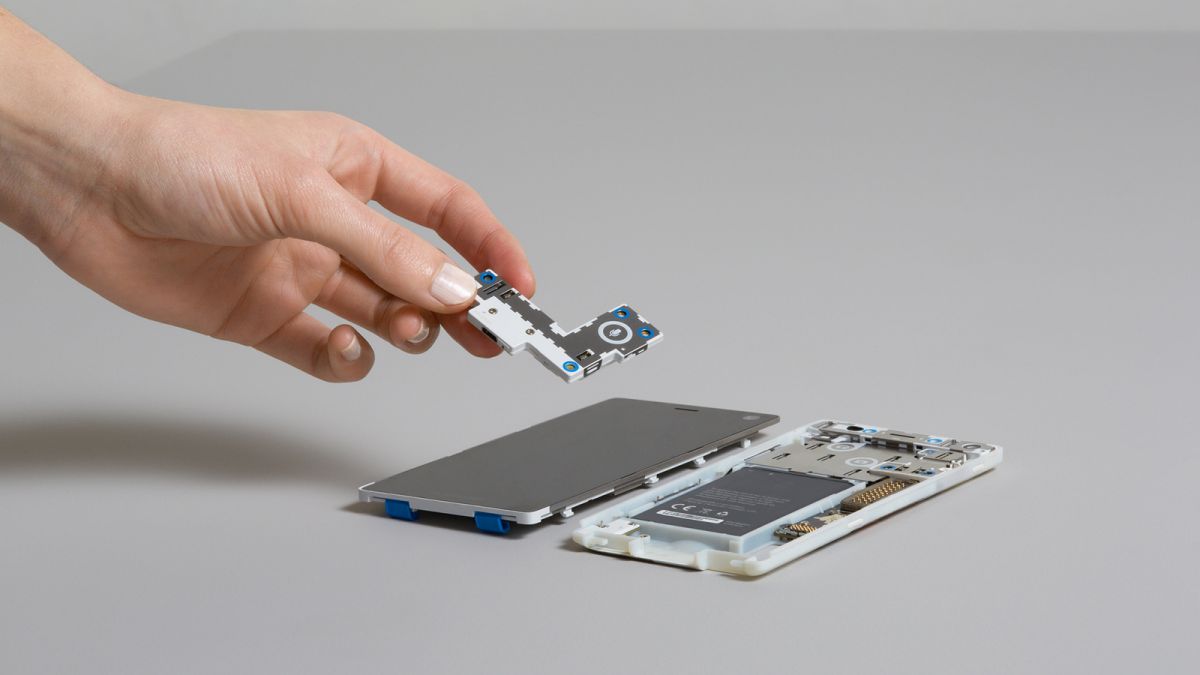
Essentially, the fledgling company wants to make sure everything that goes into its phones is sourced in a way that’s environmentally responsible, kind to both the planet and the people working at every step of the supply chain.
Whether it’s ensuring safe working conditions for miners, or building mines that don’t irrevocably wreck the landscape, Fairphone is making a stand.
It’s a philosophy that the other handset makers share up to a point, but usually only when they’re required to by law. Apple has made similar noises to Fairphone in the past, and is working towards more transparency about where its iPhone materials come from, but Fairphone is leading the way – as this Ethical Consumer guide shows.
On top of that environmental responsibility there’s Fairphone’s modular approach. You can’t swap out the basic camera module for a better one (not yet, anyway) but if the original becomes damaged you can order a replacement direct from Fairphone, rather than having to toss away the entire handset. It’s not quite Project Ara, but it’s getting there.
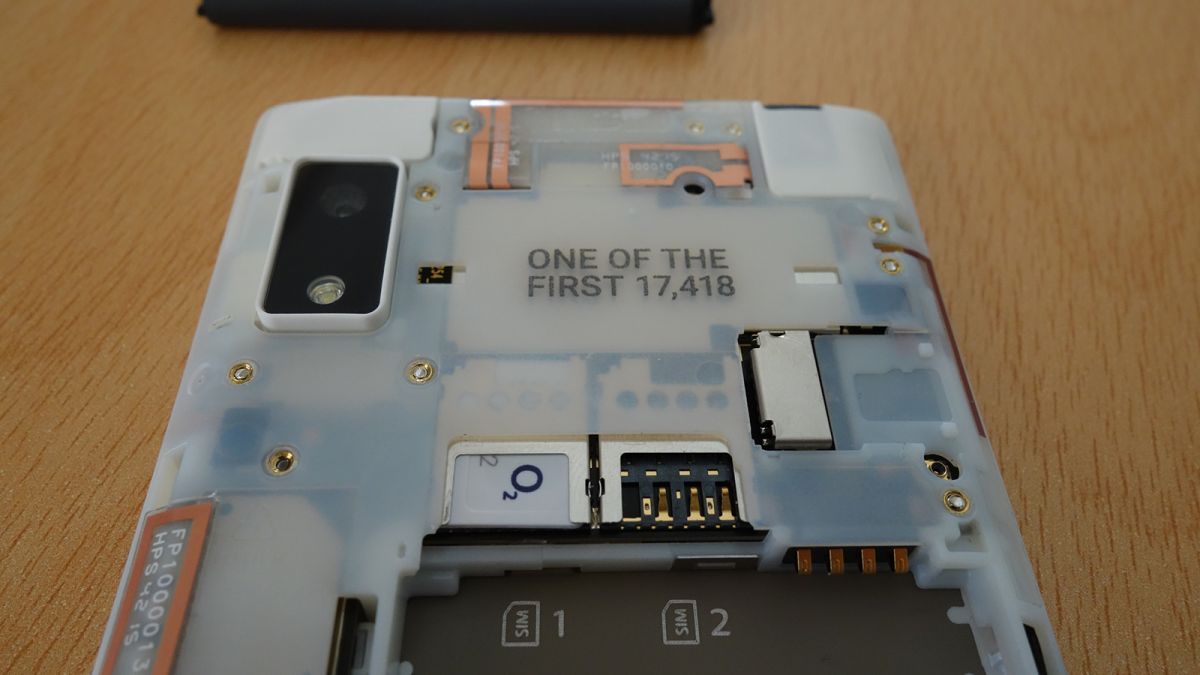
That equals less e-waste, a slower turnover of phones and less of a strain on our creaking planet. These are all noble goals, and probably worth more consideration that most of us care to give them when we’re shopping for a new smartphone.
What I can’t tell you in this review is how good the replacement service is, but I’m happy to take the company at its word. There’s a full price list here, with a replacement camera module setting you back €35 (about £26, US$38, AU$54), for example.
In fact, the Fairphone 2 did enough to score an impressive 10/10 in its iFixit breakdown (there’s actually an iFixit app pre-installed to help you replace spare parts yourself).
You can slide off and replace the screen using nothing but your fingers and thumbs, with not a screwdriver in sight – make sure you mention that to your local phone repair specialist.
Oh, and one more feature to go alongside the dual-SIM capabilities in the ‘popular in the developing world but rarely seen elsewhere’ list: an FM radio!
Performance and specs
As I’ve mentioned, the Fairphone 2 sits firmly in the mid-range camp as far as today’s smartphones are concerned: it doesn’t touch the leaders, but it’ll get you through your day-to-day tasks competently enough.
Powering this ethically-sourced phone are a 2.26GHz quad-core Snapdragon 801 processor and 2GB of RAM. There’s 32GB of internal storage (and don’t forget that memory card slot we mentioned earlier), with no configuration options to choose from save for those coloured backs.
Wi-Fi and Bluetooth are included of course (as indeed is 4G/LTE, in case you thought the manufacturer was skimping on the high-speed connectivity); NFC is omitted, but the board has been configured to be able to accept an NFC-equipped back case in the future, should Fairphone or someone else build one.
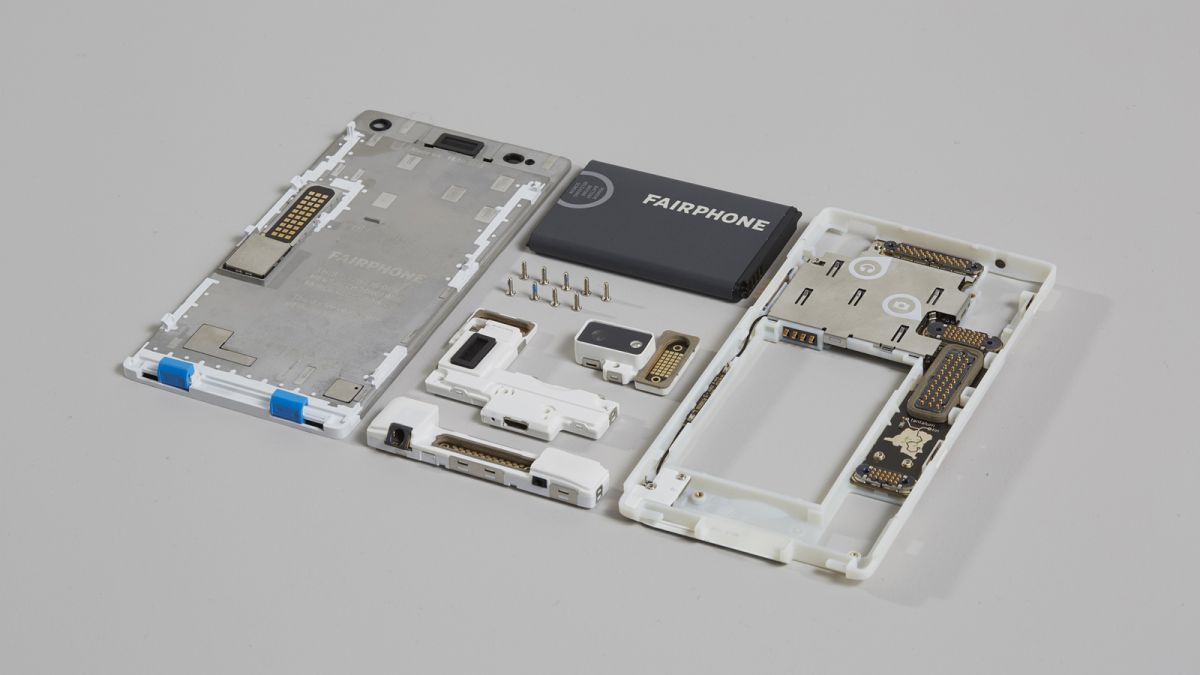
The Fairphone 2’s GeekBench 3 scores averaged out at 2347 for the multi-core test. Our old friend the Nexus 5X got 2990, while one of the best budget handsets of last year, the most recently launched Moto G, topped out at 1590 points.
Those benchmarks back up what the specs suggest on paper: this is a phone in the middle of the middle range. The Samsung Galaxy S6, by comparison, achieved a cool 4850.
Perhaps the biggest surprise is the presence of Android 5.1 Lollipop rather than 6.0 Marshmallow, which has become the standard (in terms of new phones if not old ones).
To give Fairphone its due, the skinning job they’ve done is subtle, and not at all bad: a list of recently and frequently used apps is one swipe away from the home screen. Swipe the other way to see the contacts you most recently got in touch with, and the people you contact the most.

Tap the Notifications icon and you can enable or disable alerts on an app-by-app basis, although of course this wouldn’t have been necessary if Lollipop had been installed to begin with.
Another nice touch is the ‘peace of mind’ message on the lock screen that tells you how long it is since you unlocked your phone – it sounds like it won’t work, but it does gently encourage you to not keep glancing at your handset quite so often.

Aside from a couple of more intensive apps and games, I didn’t notice any sluggishness or lag in the week or so I spent with the phone, although of course this is something that can often become a problem gradually over time.
In the apps drawer, ‘active’ icons are separated from ‘idle’ ones (apps you haven’t used for a month or more). It’s another small tweak that makes a lot of sense.
And here’s yet another one: privacy warnings when you install new apps, based on the kinds of permissions they’re asking for. You can turn this off if you don’t like it, but it’s a handy reference to have, especially for the less technically savvy users out there.
From the perspective of someone who spends most of his time in stock Android, Fairphone’s tweaks are intelligent and unobtrusive ones.
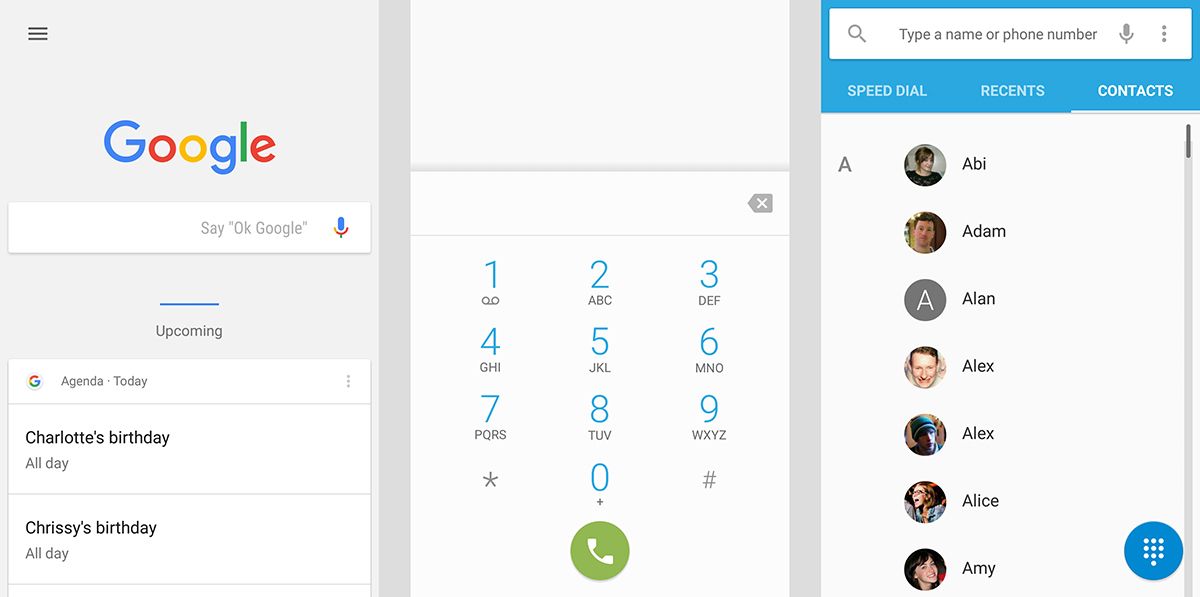
In the end I didn’t even miss Marshmallow that much, especially once I’d installed Google Messenger for SMS duties (with all Google’s apps spun out, all Android really is these days is a Settings screen, a home screen wrapper and some under-the-hood tweaks).
From a software perspective there’s a lot to like about the Fairphone 2, and it’s credit to the company that they’ve spent some time focusing on the Android skin as well as the hardware of the phone. It’s difficult to imagine anyone disliking this phone on the basis of the OS or interface alone.
With the OS and a handful of apps installed on our test phone, we were left with 23GB of spare space.
Camera
If, like me, you’ve found yourself trying out a lot of Android phones down the years – or if you’ve read a lot of reviews of said phones – then the phrase “fine for sharing on Facebook, but you won’t win any photography awards” will probably be familiar to you.
The Fairphone 2’s 8-megapixel rear-facing camera is perfectly adequate, and no more than that. You also get the stock Lollipop Camera app (with HDR and timer settings), not the slightly more modern one that runs on Marshmallow devices.
Stop me if you’ve heard this one before… the Fairphone 2 can take a decent picture in decent lighting conditions, but tends to struggle in lower light. One unique feature is the hardware camera button we mentioned earlier, directly down from the power button and very Lumia-esque (the lower volume button can be used to snap a picture too).
Video-wise the cameras top out at 1080p (rear) and 720p (front), and again work about as well as you’d expect from a smartphone at this price and spec level. It’s not going to let you down unless you’re on a midnight walk through the woods without a torch, but if you want seriously good results you’ll need a better phone (or an actual digital camera).
Shutter speed and focusing are fine, and just about comparable to the Nexus 6 I’ve been using recently; however, the end results aren’t quite as good, with blurring and noise often in evidence if the conditions aren’t absolutely right.
No one’s going to buy the Fairphone 2 for its camera capabilities of course, but it might put a few people off if they can’t be confident of being able to take eye-catching pictures on the go – that’s hardly a problem exclusive to the Fairphone 2 though.













Battery life and media
Battery life
Battery life isn’t something you can definitively measure in the space of two weeks – new batteries fresh from the factory usually flatter to deceive, for example – but for what it’s worth the experience I had with the Fairphone 2 was something of a mixed bag.
Left to its own devices the phone would lose only a small amount of battery life, even without Marshmallow’s Doze feature. On a couple of days when I hardly touched the handset at all there was still a good chunk of power left when I got back to it.
When you’re actually using the Fairphone 2, though, it can start losing battery life pretty sharpish. One day I left the house at 11am with a 55% charge, only to find just 15% left by 8pm and the phone dead by 11pm – and that was after just a few minutes of web browsing, some brief bouts of emailing and a couple of photos, so not exactly heavy use.
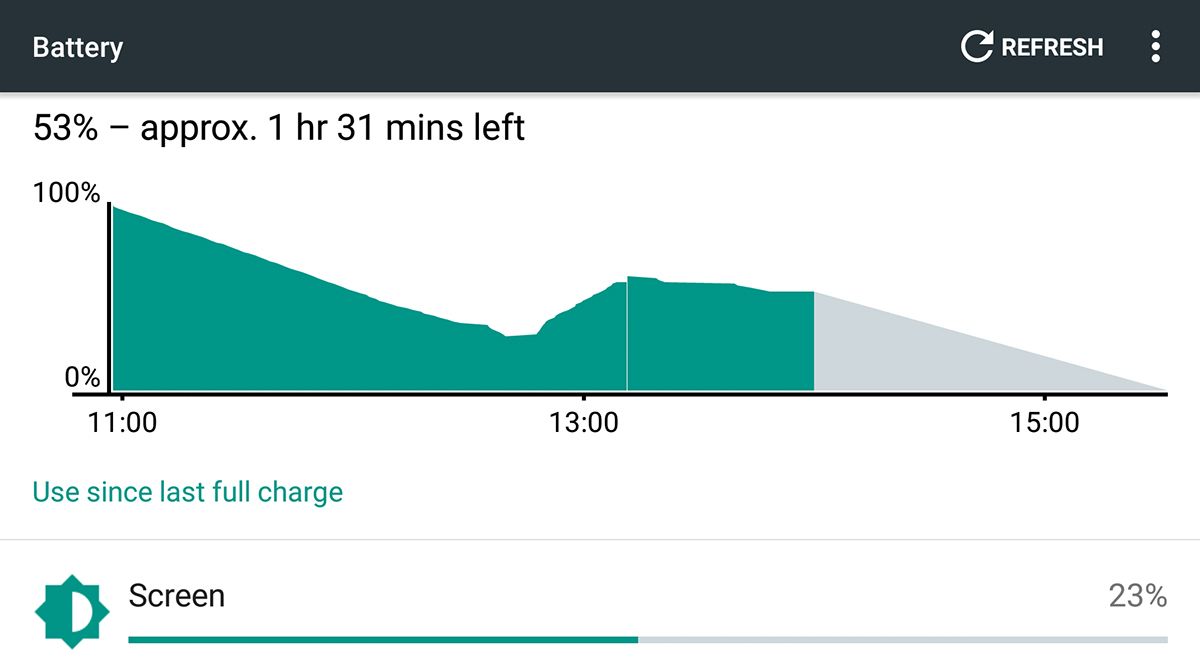
My initial feeling from the time I’ve spent with it is that the Fairphone 2 ‘hibernates’ pretty well, but has a battery that drains rather speedily when you actually put it to use, as you’d expect from a 2,420mAh unit.
That’s a small power pack by today’s standards, but considering the relatively low-powered components the end result is a battery life that hits the universal standard we’ve all become accustomed to: a day of use if you’re careful.
As for the great battery life leveller – the official techradar battery test – the phone didn’t fare too well. While displaying a looping HD video on adaptive brightness for 90 minutes, the charge sank from 100% to 69%. Repeating the test with the screen and volume cranked right up saw a drop from 100% to a paltry 42%.
That means you could go from 100% to zero watching a two-and-a-half hour movie. By comparison, at full brightness the same test saw the Nexus 5X nosedive to 68%, the Samsung Galaxy S6 drop to 74%, and the iPhone 6S from 2015 fall to 70%.
It’s another category in which the Fairphone 2 is distinctly middle of the road. As with the camera, it’s slightly disappointing, but hey – you can always carry a spare battery around with you, right?
Music, movies and gaming
There are no headphones included with the Fairphone 2 (another e-waste saver). The single built-in, rear-facing speaker does an okay job of pumping out your tunes, and no more than that. When you get to higher volumes in particular you’re going to start annoying yourself, and anyone sat near you on the bus.
Spotify proved a little sluggish in operation, although that’s by no means a problem exclusive to the Fairphone 2. Google Play Music fared much better, and happily cranked out tunes for a whole afternoon through the handset.
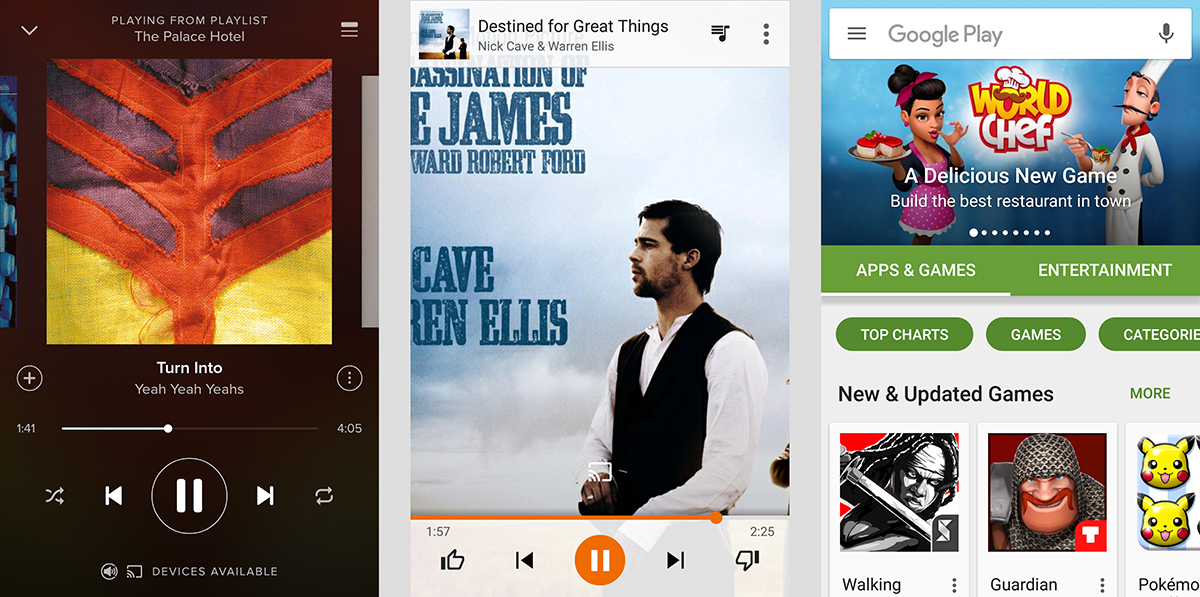
Movies and television shows are more impressive than audio on the Fairphone 2. The low-volume clarity in particular is surprisingly good, so this is a phone you can use for your late-night binge watching when you don’t want to disturb anyone else.
We’ve mentioned how the screen uses IPS LCD technology rather than the brighter, more showy AMOLED, but the output from apps such as Netflix and Google Play Movies still comes across at a very good quality. The 5-inch screen seems rather small for the task, but then again I’m used to 6-inch displays now; your mileage may vary.

If you’re being picky you might say videos look slightly washed out and desaturated, but it’s only slightly – and you weren’t expecting IMAX quality anyway, were you? For the occasional bit of iPlayering and so on the Fairphone 2 won’t disappoint.
The plastic case makes for a comfortable video-watching experience in one hand or two, and while the cheap, stiff external buttons are one of the low points of the phone, you’re not really going to need them to watch Game of Thrones on your mobile.
I didn’t notice any overheating issues, with the phone remaining cool throughout prolonged periods of viewing.
The only pre-installed apps as far as media goes are Google’s own, but media discovery is helped by the inclusion of a file browser called Amaze.

That 32GB of storage space included with the Fairphone 2 should be enough for most users, and of course the memory card option is there as well, so everyone’s covered. You can rest easy that you won’t be running out of room.

I gave Angry Birds 2 and the more intensive Modern Combat 5: Blackout a run-out, and both proved playable. There were no problems at all with Angry Birds 2, although you might find yourself spending a second or two longer on the various loading screens than you might like.
In the case of MC5 there was occasional stuttering and the phone ran very hot, but otherwise the device coped admirably, and frame rates kept up with the action. That’s one advantage of a 1080 x 1920 screen as opposed to 1440 x 2560: fewer pixels to push, and less strain on the internal components.
Competition
Nexus 5X
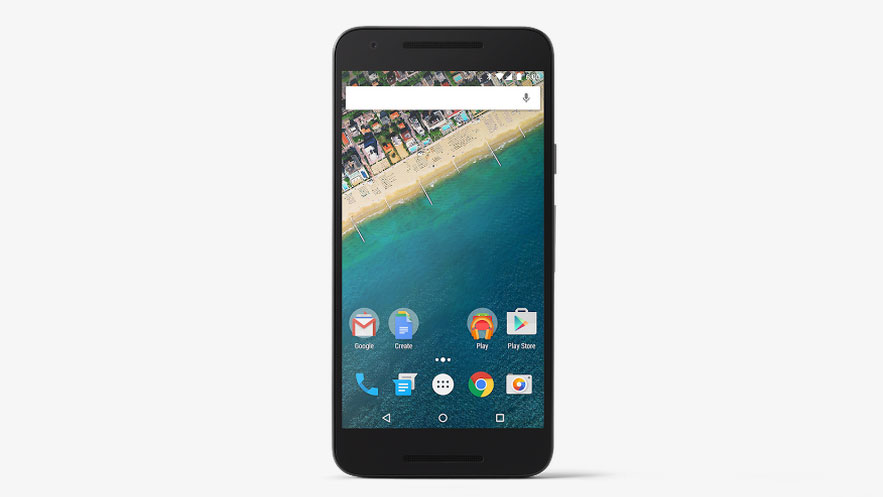
At first blush the Nexus 5X gives you more phone for less money when pitted against the Fairphone 2 (5X prices start at £299/US$379/AU$479 rather than the euro equivalent of £400/US$575/AU$815): you get a more recent processor, more megapixels in your camera and of course Marshmallow installed from the off (not to mention speedy updates straight from Google when new versions appear).
However, factor in a five-year lifespan for the Fairphone 2 and suddenly it looks a much better-value proposition.
If you’re a stock Android diehard it’s well worth giving the Fairphone 2 OS skin a chance, although quite how you’ll do that without buying the phone is hard to say. You might be surprised at how competent it is, and it’s worth a second look if you were planning to plump for the 2015 collaboration between LG and Google.
The Nexus 5X doesn’t have the world’s greatest camera, so honours are probably even there, but it can take advantage of some of the new features introduced with Android 6.0 Marshmallow, such as the native fingerprint sensor technology, or the Doze battery-saving system that shuts down unused apps when your device is idle.
Find out what we really think about the Nexus 5X
iPhone 5S
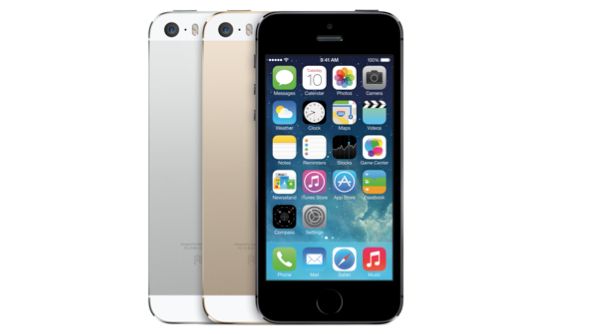
Comparing the Fairphone 2 with Apple’s handsets is an interesting exercise, not only because you have to go back to the iPhone 5S to find an iPhone that can compete with the Fairphone 2 on price, but also because Apple is another company that makes much of its environmental and ethical principles.
The iPhone 5S is capable of running the latest and greatest iOS 9, and so probably edges it against the Fairphone 2 in terms of software and performance (unless you really can’t see yourself using anything other than Android), even with innards from late 2013.
One area where the iPhone has long been the market leader (at least until the latest Galaxies came along) is in camera lens quality: you’re bound to get much better shots with an Apple device than you are with the Fairphone 2, at least until the Dutch company comes up with a substantially superior camera module.
If you buy the iPhone 5S with a Fairphone 2-matching 32GB of storage it currently comes in at £419/US$499/AU$829, which is slightly cheaper or dearer than the phone we’re reviewing here depending on how your local currency is ranking against the euro just now.
Catch up on our definitive review of the iPhone 5S from Apple
Moto G (2015)
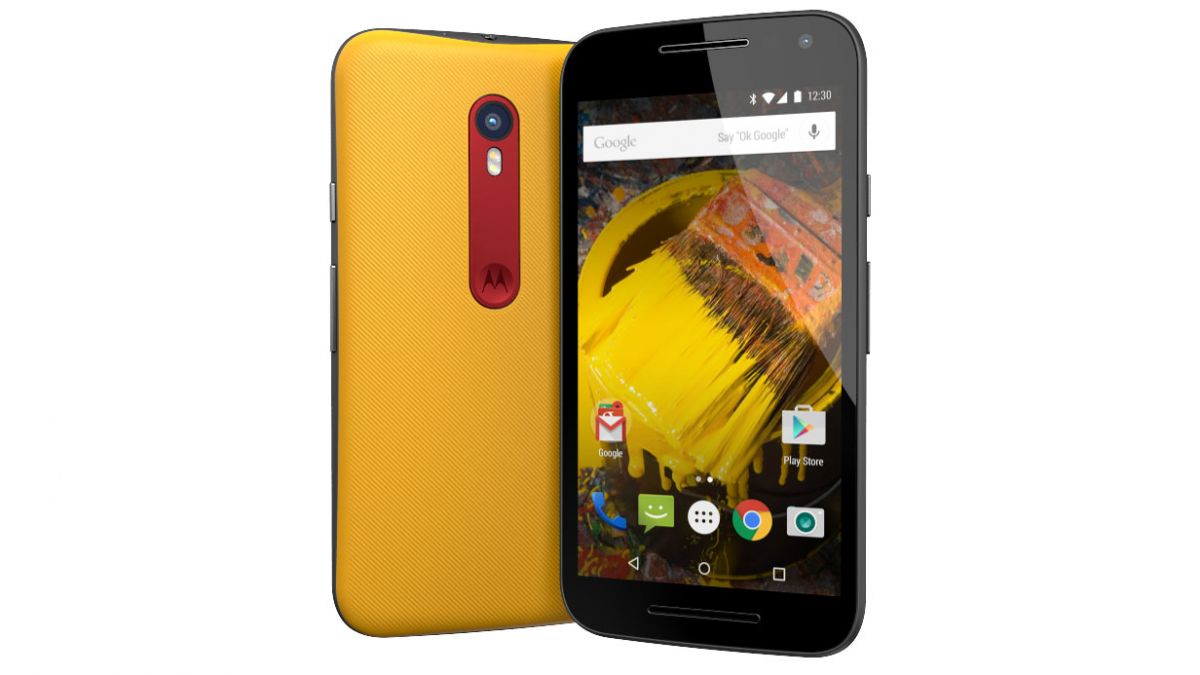
You’re after a mid-range Android phone some way behind the well-known flagships, so what do you go for? The most recent Moto G has dazzled reviewers and users alike, packing some so-so specs in an appealing little handset that offers great value for money; it’s more than the sum of its parts. The Fairphone 2 will cost you more, although as we’ve noted it’s designed to last longer.
The Moto G is cheap though – really cheap when you match it up against the entry fee for the Fairphone 2. Plus, it has a better camera, is water-resistant, and can be customised with your choice of backing plates and colours. Looks-wise these two phones are pretty similar, but in most other categories the 2015 Moto G wins out.
The Fairphone 2 has more pixels in its 5-inch screen, and of course its two aces to call on as well: its ethical approach and its repairability. Ultimately, if these are your priorities then you’re going to choose the Fairphone 2 over the rest of the phones out there, no matter what the head-to-head scores in terms of specs, price, power or the styling of the plastic shell attached to the back.
Take a look at our full review of last year’s Motorola Moto G
Verdict
Do you want a phone that’s kind to the people that made it and the planet we all live on? That’s the fundamental question when it comes to the Fairphone 2, and the usual considerations – specs, design, performance – take second billing.
As a result it’s hard to review the Fairphone 2 in the usual way: without those ethical credentials it would barely register a blip, but if you consider the overall package then you’re looking at a whole new approach to smartphones.
We liked
The philosophy behind the phone, which we’ve mentioned several times already – no one else is really as committed to these ideals as Fairphone is. The exposed back is very cool, and DIY tinkerers will love the ease with which you can get at the phone’s innards.
The skinned version of Android is a definite plus as well, and a somewhat surprising one. Fairphone has done a great job of adding some intuitive extra features on top of Google’s OS without ruining the core experience, or making them feel like bloatware.
Fairphone is emphasising the ease with which you can repair the phone, but the idea of modular upgrades is appealing as well. If Fairphone or one of its partners can make this happen then it’s another reason to give this handset serious consideration.
We disliked
It’s just not a very powerful or very svelte phone, which you may or may not give two hoots about. Running intensive apps and games can cause noticeable lag when you compare it to the latest and greatest phones on the market, some of which don’t cost that much more.
Hopefully the high price won’t put too many people off: if you think about it logically, you’re spending more to save more, but of course that’s not the attitude most people walk into their local phone shop with. The price shouldn’t be an issue, but it might be for some.
The camera is particularly uninspiring (is an upgraded module on the way? I hope so) and, translucency aside, the plastic backing cover-come-case is a really fiddly bit of kit that feels a bit too much on the cheap side, and does nothing for the looks of the Fairphone 2.
Final verdict
I like what Fairphone is doing here, and let’s hope other phone manufacturers sit up and take notice. It can certainly hold its own in the middle of the Android market, and when you add in everything else that the phone stands for you have a very attractive proposition.
For me though, the power and design quality of the phone just aren’t high enough at the moment. That may sound like a rather shallow perspective to take, but for many people a smartphone is a tool as well as a toy – it needs to be fast, and responsive, and capable of taking some top-quality photos.
There is a case to be made for casual users choosing the Fairphone 2 over any other mid-range Android handset, provided they can be convinced to part with a big chunk of change up front – and considering how many people have to shell out for repairs and replacement screens every year, Fairphone might have an opportunity here.
I’m giving the Fairphone 2 four stars because of its underlying ethos, rather than the quality of the kit you get in your hand (it’s not terrible, just ordinary). If Fairphone can bring some premium modules to the party as well then we’d really be talking; as it is, it’s still an impressive engineering achievement.
Source: techradar.com










































Again, all phones have varying max brightness so testing battery life by cranking it to max means it is incomparable to each other. Please try to calibrate to a certain brightness (quite a lot of tech websites do it now as standard) before running your brief test.